#Spanish Renaissance fashion
Text

Anna Kendrick (born 1985, USA)
Edited detail of Saint Dominic Guzmán Presiding over an Auto-da-fe, 1493-1499. Pedro Berruguete (Spanish, 1450-1504).
Auto-da-fe (English: “act of faith”) was the final stage of Inquisition for prisoners accused of heresy or apostasy in Spain, Portugal, and Mexico, beginning in the 15th century. Ostensibly a final act of penance, but essentially a public execution, the most common conclusion was death by fire, though forms of pre-mortem torture and/or other methods of capital punishment were occasionally used as well.
#fangledeities#anna kendrick#spanish renaissance#sacred art#catholicism#christian art#auto da fe#public execution#spanish inquisition#capital punishment#burned alive#burned at the stake#church history#renaissance painting#spanish painter#torture#pinup#pin ups#fashion photography#goddess
30 notes
·
View notes
Text
I kind of hate that, as a historian, my knowledge bank is composed of two very contrasting things:
genocide/ethnic cleansing
historical textiles and fashion
like great, I can tell you about when x tried to kill a bunch of people or you can have me look at your favorite dumbass’ outfit and i can tell you all about a bunch of crazy little details you probably have no clue even existed
#ooc#[ like raphael’s outfit is interesting to me for example ]#[ because it looks like it would high renaissance and it’s not ]#[ his outfit is from late medieval spanish aristocrat fashion ]#[ worn during the formative years of the inquisition ]#[ the details on his sleeves are called guarding and they came into fashion in the last two decades of the 1400’s ]#[ they’re meant to be evocative of wartime mending by soldiers having to stitch their uniforms back into serviceable condition ]#[ high class nobles slashed their garments to evoke the look and then sewed in new pieces ]#[ this is how passementerie got started which is where lace-making got its start ]#[ most often as panel pieces to insert for guards and then later as their own separate thing ]#[ another fun detail: that was a very pivotal time in spanish history ]#[ the fashion would peak around the reign of joanna of castile ]#[ her son would go on to become not only a king of spain but the holy roman emperor ]#[ textiles: lot of fun nuances can be put into characters without having to say a thing ]
11 notes
·
View notes
Text
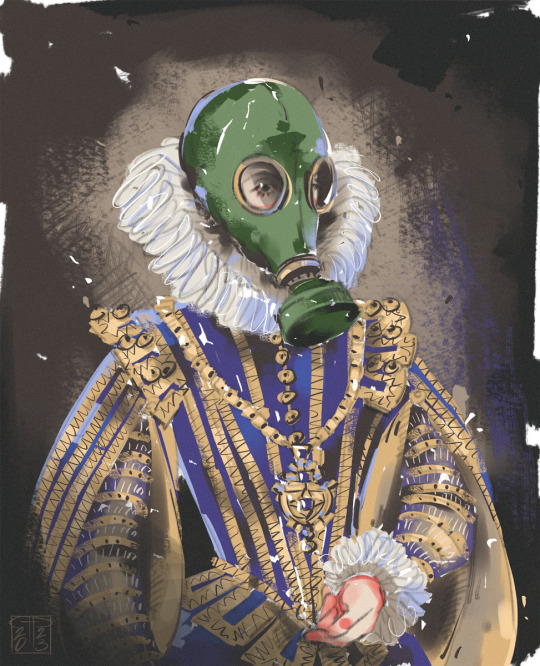
Are you Jolyne?
#jjba#jjba part 6#stone ocean#jolyne fanart#jolyne kujo#himmelgrau#artists on tumblr#16th century#17th century#1500s#1600s#renaissance#spanish fashion#gas mask#jojo#jojos bizarre adventure#jojo fanart
23 notes
·
View notes
Text

I'm so happy I managed to get the look almost complete
And she reminds me of aph nyo!Spain. The moment I saw the dress I knew I wanted it.
#spanish#love it#i know i know#there are a couole things missing#the make up and a small detail in the face#but I didn't like the make up and i'm not a fan of those other thingies#i really liked the dress#it is the most looking one I saw in the game#most could be seen in Spain too#but they were more base on French fashion#this has 16th and early 17th century vibes#siglo de oro that's it#a little bit renaissance inspired#so i had to get it#even if that meant wasting all my precious diamonds u.u
8 notes
·
View notes
Text
Ways English borrowed words from Latin
Latin has been influencing English since before English existed!
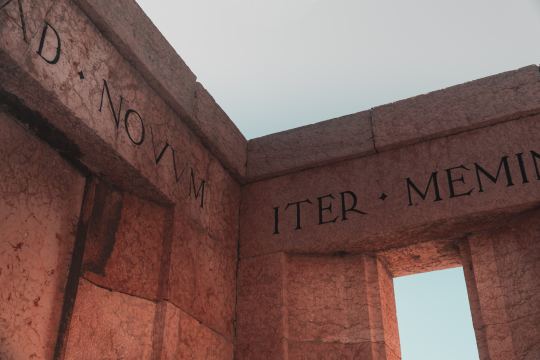
Here’s a non-exhaustive list of ways that English got vocabulary from Latin:
early Latin influence on the Germanic tribes: The Germanic tribes borrowed words from the Romans while still in continental Europe, before coming to England.
camp, wall, pit, street, mile, cheap, mint, wine, cheese, pillow, cup, linen, line, pepper, butter, onion, chalk, copper, dragon, peacock, pipe, bishop
Roman occupation of England: The Celts borrowed words from the Romans when the Romans invaded England, and the Anglo-Saxons later borrowed those Latin words from the Celts.
port, tower, -chester / -caster / -cester (place name suffix), mount
Christianization of the Anglo-Saxons: Roman missionaries to England converted the Anglo-Saxons to Christianity and brought Latin with them.
altar, angel, anthem, candle, disciple, litany, martyr, mass, noon, nun, offer, organ, palm, relic, rule, shrine, temple, tunic, cap, sock, purple, chest, mat, sack, school, master, fever, circle, talent
Norman Conquest: The Norman French invaded England in 1066 under William the Conqueror, making Norman French the language of the state. Many words were borrowed from French, which had evolved out of Latin.
noble, servant, messenger, feast, story, government, state, empire, royal, authority, tyrant, court, council, parliament, assembly, record, tax, subject, public, liberty, office, warden, peer, sir, madam, mistress, slave, religion, confession, prayer, lesson, novice, creator, saint, miracle, faith, temptation, charity, pity, obedience, justice, equity, judgment, plea, bill, panel, evidence, proof, sentence, award, fine, prison, punishment, plead, blame, arrest, judge, banish, property, arson, heir, defense, army, navy, peace, enemy, battle, combat, banner, havoc, fashion, robe, button, boots, luxury, blue, brown, jewel, crystal, taste, toast, cream, sugar, salad, lettuce, herb, mustard, cinnamon, nutmeg, roast, boil, stew, fry, curtain, couch, screen, lamp, blanket, dance, music, labor, fool, sculpture, beauty, color, image, tone, poet, romance, title, story, pen, chapter, medicine, pain, stomach, plague, poison
The Renaissance: The intense focus on writings from classical antiquity during the Renaissance led to the borrowing of numerous words directly from Latin.
atmosphere, disability, halo, agile, appropriate, expensive, external, habitual, impersonal, adapt, alienate, benefit, consolidate, disregard, erupt, exist, extinguish, harass, meditate
The Scientific Revolution: The need for new technical and scientific terms led to many neoclassical compounds formed from Classical Greek and Latin elements, or new uses of Latin prefixes.
automobile, transcontinental, transformer, prehistoric, preview, prequel, subtitle, deflate, component, data, experiment, formula, nucleus, ratio, structure
Not to mention most borrowings from other Romance languages, such as Spanish or Italian, which also evolved from Latin.
Further Reading: A history of the English language (Baugh & Cable)
154 notes
·
View notes
Text
Jessamine's design has always intrigued me. the stark, full black suit and tall collar are pretty obvious status symbols. black was for the longest time an incredibly expensive colour of fabric due to how difficult it was to achieve proper rich blackness during the dyeing process and the collar, while most likely just a trend in Dunwall fashion inspired by the 1890s high collars can be read as lace, especially in some concept art, which is hard to care for and needs to be starched to hell and back to keep nice and stiff for a collar like that
but what I find a lot more curious about this is that the clothes appear very much inspired by Spanish renaissance fashion
which, honestly, would make sense with the real world inspiration. 19th century was obsessed with the past, with the romanticized medieval and renaissance times, and it was quite common to see fashion inspired by times long past (I mean, just look at Worth. the man invented haute couture and there is so much influence of medieval and Elisabethan fashion in his designs). it was also a thing for rich families to just kinda... invest in recreations of historical pieces of clothing and LARP in them.
Jessamine's clothes, in particular, reminded me of Spanish court dresses. especially of the portraits of Anne of Austria and Elisabeth of Valois

obsessed with those slit sleeves. too bad Jessamine didn't go the extra mile to have the sleeves hang long and heavy around her arms but they were more form fitting
there is also something to be said about the tall white (possibly starched lace) collar and the style of clasps used on her clothes
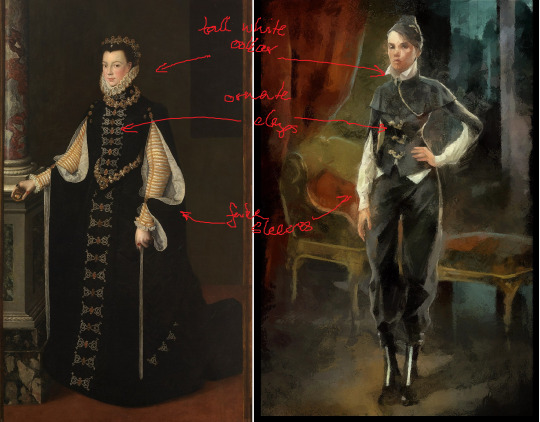
the mini cape thing she has on top is more similar to the style of capes worn by men in renaissance, but yeah, of course she reminded me of a Spanish princess when this is one of the most given example portraits for this style
I wonder if this was an intentional choice on the designer's side or if they were just inspired by the revivalism present in 19th century fashion. what really makes me consider that though is that one of her earlier designs has those sleeves much, Much more pronounced and obvious

oh the things that could have been...
still, it makes me wonder: if this was intentional, what does this tell us about Jessamine, and the history of the Isles themselves?
#dh#dishonored#jessamine kaldwin#fashion history posting#I am not normal about this gown#me and sin even had an au where her and corvo are part of a fashion history reenactment group#still I wonder. does she just like the style? or is she just a little insane about fashion history like I am?#bias admission I spent two years working on a comic that had its entire aesthetic based around renaissance and its 19th century revival#so I might be seeing things where there are none#either way you are welcome Ive been meaning to make this post for Months at this point#we dont know if artificial black dye was already a thing at the time of DH1#another curious thing though!#since this is before silvergraphs were invented Jessamine wouldve been painted in a Particularly Nice Outfit#like if youre gonna pay someone to paint you youre gonna pose in your best garb#and its the same fit she wore to welcome corvo back which means she dressed up nice for him#which I find really fucking cute#anyways heres my insane ramblings I hope you enjoyed
115 notes
·
View notes
Text
OK GOOOOOOOO READ THIS POST FIRST I WAS TRYING TO REBLOG IT BUT TUMBLR WOULDNY LET ME ADD ANY MORE PHOTOS OR TAG ANYMORE PEOPLE CUZ IM USING THIS POST AS A JUMPING OFF POINT!!!!!!! GO FOLLOW @theprestigegirly AND @cloverisnonexistantbro !!!!!!!!!
I had @void-detective ask me a few days ago if the ornaments on Luis’ jacket had any particular meaning and as with everything I fell down,,,,,, one hell of a rabbit hole HDNWHWNEHDNX
So, first off; I couldn’t find any super definitive answer to what was on his jacket but I have some pretty good theories!!!!!!!
@vespereargentum and their friend on Twitter helped point out to me that the floral designs are really reminiscent of old Spanish Renaissance furniture and like yeah!!!!!!!!!!!!!! I mean look at it!!!!!!!!

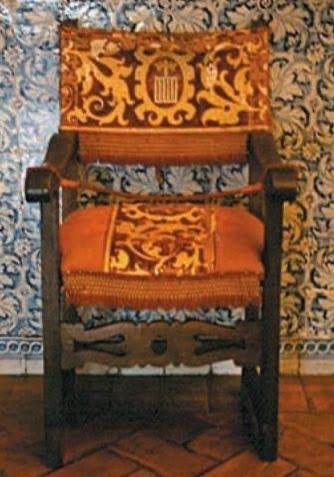
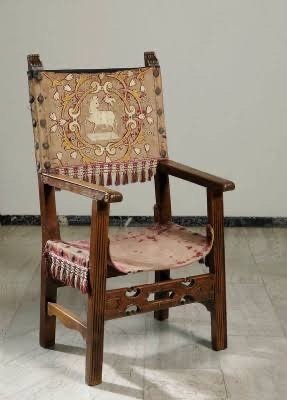

These photos aren’t very good but you get the gist!!!!!!!
Why would Capcom put visual designs from FURNIATURE onto clothing I have no clue, but considering the fact that almost every single detail of Luis’ character down to the damn rings are extremely purposeful I’m sure we could pick up some pieces!!!!!
It also kinda makes sense, like,,, character wise too y’know- Valdelobos was a glorified Catholic cult and obviously they kept a very old-fashioned mindset so visuals-wise it makes sense!!!!!
@ 11cool also pointed out that his jacket has a lot of similar motifs to Matadors and Traje De Luces which they have their own post you can check out if you wanna!!!!!!!! Ofc there brings up the whole issue of y’know, Bad spanish stereotypes and bullfighting etc etc but this whole post is just throwing stuff at the wall in complete honesty!!!!!
And like the og post and @cloverisnonexistantbro said there’s a not for none Chance that the designers were trying to play into abstract windmill motifs would would be super cool!!!!!
@theprestigegirly and @kaychen666 were also kind enough to point out that the flowers on his jacket kinda look like poppies!!!!!!


And I think most people already know that poppies are a pretty common symbol for death (especially after war which I’ll touch on in a second) which. Y’know. Would be just SUCH A FUN AND SILLY DETAIL if true HAHDHENDHSJ
And like the og already has put so eloquently there are just,,,,,, S O many lil design elements of Luis’ that are so perfectly purposeful,,,;,,,… down to the fact that Luis has a gun from WWI (Realistically probably passed down from hsi grandfather, who would have probably had to have lived through Spanish civil wars (yayyyyy we love generational trauma yippeee another thing to add onto Luis amirite /lh)) and down to the fricken rings he wears and what fingers he wears them on!!!!!! (One of the rings for instance is of the Virgin Mary and it’s supposedly said that wearing a ring on the fingers Luis does symbolises leadership and compassion etc etc etc Yknow ring logic HDBEHEBXHX)
So like idk!!!!!!!! If anyone who actually has knowledge of Spanish culture wants to chip in PLEASE PLEASE DO!!!!!!! I’m the whitest Mf on planet earth there’s only so much justice I can give Luis BSNDHENDJSNSJ
Tl;dr: until Capcom or somebody whose more of a professional in this field outright explains what little design details like that mean for certain I’m just throwing stuff at the wall and letting people see it HDHEHEJEID
23 notes
·
View notes
Text
Found out there's a thing called OC-tober and I want to participate! I'm not really going to be following any prompts or post on any sort of schedule (especially since I didn't have time to prepare anything), but I've got more than enough OCs, so I figured I'd throw my hat into the ring.
First up: one of my Danny Phantom OCs, Ramona Sanchez

Ramona is Paulina's paternal cousin and roughly the same age (only a few months apart). She's very outdoorsy, loves hiking and exploring tide pools, is a geek and loves going to conventions and renaissance fairs.
After her mother died, her father moved Ramona and her younger twin brothers from the Bay Area to Amity Park to be closer to the rest of his family once the school year was over.
It's been an... adjustment for them all, and Ramona suffers from some parentification, being expected to take care of the home and her brothers while her dad worked. Her dad had hoped to take some of the pressure off of her by moving closer to his brother and family, but not much has changed.
It was one hell of an adjustment for Paulina, too. While she got to move into a bigger house (which was awesome), it's gone from just her and her dad to her, she also has to share with her tío and three cousins.
Because of this, Ramona and Paulina fight constantly. It's not uncommon to find the two of them screaming at each other in spanish behind the bleachers at lunch. Ramona because she's sick of Paulina trying to change her, and Paulina because Ramona is a geek and ruining her reputation.
But no one else is allowed to talk bad about the other. No one. Anyone who dares to talk bad about her cousin will find themselves facing down their full fury. Paulina lit into Dash when he called Ramona a "freak" and Ramona has blown up at Sam multiple times over comments made about Paulina.
Having a fresh, outside perspective, Ramona clocks Danny Fenton as Danny Phantom pretty quickly and joins the team as the "underground medic" since she's had the most first aid experience (bandaging up brothers after pee wee football, and her dad is a doctor).
This pisses Paulina off because it now means the biggest losers at Casper High keep coming over to her house. It also causes an insane amount of jealousy after she walked in on Ramona stitching up a shirtless Phantom in their bathroom.
Random Facts in no particular order:
Gets along the best with Tucker since they're both cosplaying comic book geeks
As much as Paulina insults her lack of fashion, she comes in to steal Ramona's "hobo clothes" (extra large sweats) all the time because they're super comfy
Ramona and Paulina are nearly identical, so Ramona does her best Paulina impression to tease Danny a lot. He does not appreciate it
She has the biggest crush on Fright Knight. He's a literal knight in shining armor! Paulina teases her, but supports her
Paulina and Ramona get along a lot better behind closed doors and have a much better relationship than most would guess
Ramona is still in charge of getting her little brothers to and from pee wee football
Ramona's cosplay makeup has gotten much better since moving to Amity Park... because Paulina does it
Fun Fact: Ramona started out as a self insert before I fleshed her out, and her relationship with Paulina's was inspired by an IRL relationship with one my cousins.
18 notes
·
View notes
Note
Would luvv to get ur movie recs and if anything funky has happened ur past week too !! ♨️♨️ - @lcetruckkiller <-accursed sideblog user
Movies I've been obsessed this 2023!
In a glass cage Spaniards can do some things extremely well and one of them is making terrible, horrible horror movies that no one should watch! In a Glass cage (You can find it on Effedupmovies) Is one of them. It is not for the faint of heart, still I keep thinking about it. Constantly.
The Lion in Winter No other movie shows the complexity of having to see your family during the winter break. Yes it is set in medieval England, still, it always hits. Also Sir Anthony Hopkins plays a gay prince, What else can I say!
[REC] Spaniards and horror... Again. This movie has me by the balls. It was part of the found footage renaissance, and it's incredibly well-made and quite scary! I also have a link so it can be seen in the OG spanish.
Le Pacte des loups What if bloodborne was French? Well, this movie answers that question. It is... I won't say good because it would be a lie. But its a 2001 fantasy historical film with hot women wearing historical fashion.
Bacurau Watch Bacurau for a clear skin and healthy hairs. I cannot recommend this movie enough times, I swear to God. It is amazing.
Okay so funky.
Long time followers know I have the ghost of laughing children following me.
As in every house I move, I hear this kids running, and laughing and then hitting a war. I had not heard them in the 6 moths I've been living here! So i was like, Oh well, I'm finally free!
YESTERDAY I HEARD THEM AGAIN! Incredibly rude of them!
5 notes
·
View notes
Text
So in the GOT series, Sansa is more often seen wearing Westerosi fashions
Now I'm beginning to imagine Sansa in Valyrian fashions, since she got with Jon and all
I can also totally imagine that several of those female Valyrian allies/friends she made in tow began to recommend Valyrian fashions to Sansa
And then Sansa came to gradually dress in several Valyrian fashion elements, since she got with Jon and all
Sansa came to sometimes enjoy dress in Barlaeris furs and crystals, Velaryon oceanic fashion elements and Pearls, Macklyn Phoenix themed fashion elements and gemstones, Valtigar leather cloaks and ornate robes, and such
In fact, I came to draw several of those Valyrian fashion styles from the 6 Valyrian houses that joined Aegon I Targaryen's conquest of Westeros, that I can totally see Sansa wear

First, a drawing of Sansa in a Barlaeris era of Eileanas Point fashions
The House Barlaeris was one of the 40 dragon lord households of Old Valyria, that have several seats in the North of Old Valyria, until the Doom Happened. Then the House Barlaeris fled to Mossovy where they lived until Aegon I Targaryen called them up to join him on his conquest plan in Westeros - and the Barlaeris members in tow eagerly accepted it. With their hippogriff fleets, they came to rule Eileanas Point in the Northeast of The North, and soon formed formidable ties with House Stark
I can totally see House Barlaeris fashions came to have some nods to Ancient Greco Roman, Ancient Etruscian, Medieval/Renaissance Slavic, and Medieval/Renaissance Scottish fashions

Next, Sansa in a beautiful Velaryon Era Braavos attire, with Pearls and a dress made of Essarian silk.
The House Velaryon is originally one of the Great Houses of Essaria, who joined Lysandros III of Essaria's conquests around several parts of Essos. The House Velaryon came to found the Velaryon Dynasty of Ghis. Ever since Julaerys Targaryen And Thalassea VII Velaryon got together, the House Velaryon soon also has several seats in the South of Old Valyria
Before the Doom, the first Velaryon Emperor of Qarth, Corlaeyos I Velaryon ( who has some nods to Constantine the Great ), a descendant of both Targaryen and Velaryon lines, founded the Velaryon Era Qarth. During the Doom, the rest of the Velaryons in tow all fled to Qarth, where they stayed until a Dothraki descent invasion on Qarth happened. Then they moved to Lys and lives amongst House Rogare ( another one of the 40 Dragon Lord Old Valyrian households ) over there....until Aegon I Targaryen called them to join his conquest on Westeros. They soon ruled Driftmark for centuries until Tywin's rampage on the Houses Targaryen and Velaryon happened. Thus, the House Velaryon moved to an island near Braavos for security, until Daenerys called them to join her conquest.
After the wars of Wolves and Lions, the House Velaryon founded a new Velaryon dynasty in Braavos

And then, Sansa in a gorgeous Macklyn Era of Bay of Dragons attire, with gold jewelry and a purple silk Ottoman/Renaissance Italian inspired robe and a shimmering lavender sheer veil attached to her hair
The House Macklyn is also one of the 40 Dragon lord households in Old Valyria that have several seats in West Valyria.....until the Doom happened. Then, they fled to Mereen where they lived until they joined Aegon I's Conquest of Westeros. Then they ruled the Dornish Marches until during the War of Wolves and Lions, where the House Macklyn helped the Houses Martell, Uller and Dayne flee from Cersei's rampage on Dorne to The Rhohyne, Ghis and Skahadazhan respectively.
Later on, after Daenerys' demise, they founded a new dynasty in the Bay of Dragons ( which I think has nods to the Aegean Sea regions )
I can totally see House Macklyn fashions came to have some nods to Ancient Greco Roman, Byzantine, Medieval Catholic Spanish, Medieval/Renaissance Italian, and Ottoman fashions

And then, Sansa, in a gorgeous green and black Valtigar Era of Westerlands dress and gold jewelry
The House Valtigar are amongst the 40 dragon lord households of Old Valyria, with several seats in Northwest of Old Valyria, until the Doom Happened. Then they moved to Pentos, and then came to rule Valtigars Rest amongst the mountains of Westerlands.
They soon became amongst House Lannisters' greatest rivals during War of the Wolves and Lions, even managing to get Tyrion to spy for them for years ( Even before he jumped ship to join Team Daenerys until the KL Massacre caused by Daenerys ) after helping him nurse from his injuries from a great fall in Valtigars rest ( and no Lannister in tow helped him. Poor Tyrion ). By the time the Houses Lannister and Baratheon fell, the House Valtigar founded a new dynasty in Westerlands, and they are way more popular with the Westerlands people in general than the House Lannister ever are.
I can totally see the House Valtigar fashions to come to have some inspos from Ancient Greco Roman, Medieval Italian and Medieval/Renaissance English fashions

And then, Sansa in a gorgeous Celtigar Era Claw Isle, with several elements inspired by Medieval Alpine and Ancient Phoenician fashions
The House Celtigar was amongst the Great Houses of Essaria, who joined Lysandros III of Essaria in his conquests. They came to rule Tyrosh and founded Celtigar dynasty of Tyrosh. Then after the whole Valyrian conquest of Tyrosh ( which was some years before the Valyrian Reach wars ), that conquest ended with a truce in arms between the House Celtigar and those Valyrian fleets. And so, House Celtigar came to have several seats in the East of Old Valyria....until the Doom happened
Then, the House Celtigar fled to Volantis where they lived until they joined Aegon I's Conquest of Westeros. And they soon came to rule Claw Isle, which was an island between Dragonstone and The Vale. The House Celtigar soon have formidable diplomatic ties with the House Arryn.
I can totally see House Celtigar fashions to have some inspos from Ancient Greco Roman, Ancient Phoenician, Olden Tunisian, and Medieval/Renaissance Alpine fashions

Finally, Sansa in a beautiful black and red Byzantine attire
Now, Jon and Sansa came to gradually wear some more Valyrian elements after Daenerys demise and such. And since Sansa becomes Consort of a Targaryen descent, she came to gradually wear some more Valyrian fashion elements
In the Dance of Dragons, the other 5 Valyrian households ( and the House Rogare )side with Team Black
In War of Wolves and Lions, they came to join Daenerys' conquest and Team Daenerys later on formed an alliance with Team Stark. Daenerys' betrayal on Jon and Sansa and the burning down of KL also caused ALL of Daenerys' Valyrian allies then and Tyrion to rage quit her, cuz sadly, Daenerys becomes not that much different from Cersei Lannister or Alicent Hightower
#valyrian fashion#sansa queen of the north#jonsa#house barlaeris#house velaryon#house macklyn#house celtigar#house valtigar#house targaryen#house stark#jon snow
4 notes
·
View notes
Text
Mr. Saguaro & the Cactus Analysis
As you all know, Pokemon characters are often named after plants and trees! Mr Saguaro is no exception, and what I discovered is actually quite charming and befitting of his character! \(//∇//)\

Saguaro is a type of cactus native to the Sonoran Desert that spans through parts of Arizona, California, and Mexico. When you think of a cactus, you’re most likely thinking of the saguaro, as it’s become an icon of Southwestern media.

The saguaro is huge, as it can grow to be over 40 feet tall, weigh 1 ton, and live over 150 years. It is also covered in menacing spines on its many arms. However, the saguaro is also a keystone species in the Sonoran Desert, providing food and shelter for animals and humans! ‘Keystone Species’ refers to special fauna or flora that literally keep the ecosystem around it alive. Take it away, and the entire ecosystem crumbles or is irreversibly damaged. The saguaro is valued through every stage of its life, from its nourishing seeds, the shelter inside the cactus, and its wood-like ribs once it dies.

Mr. Saguaro is clearly valued among the students, and his Home Ec classroom is safe haven where kids can chat and eat. He looks out for others and is an expert in domestic skills. Saguaro tries to present himself at the dark and brooding man other people think he is (like the spines of the cactus), but in reality, he’s very gentle, caring, and likes cute things. He is also very protective of Pokémon, and adamant that people be mindful of a Pokémon’s individual needs. Saguaro is definitely a symbol of strength and protection at the Academy!
Here are some other things I found interesting:


The saguaro has beautiful white and yellow flowers! It’s reminds me of the flower stitched on Saguaro’s apron (that could just be a basic daisy, but y’know)
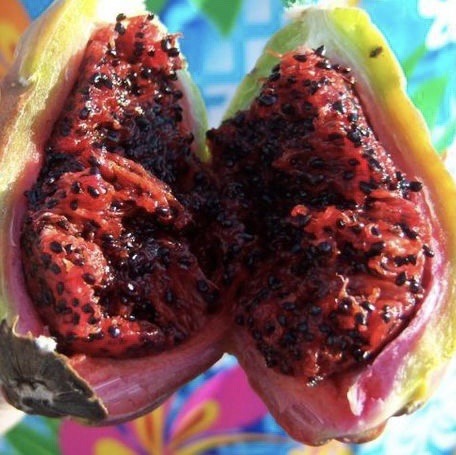

The cactus also grows a pulpy red fruit with a pink interior. It makes me wonder if Saguaro’s color palette was inspired by the fruit? This fruit is reportedly very sweet and tastes a bit like strawberries. Saguaro has a sweet tooth!
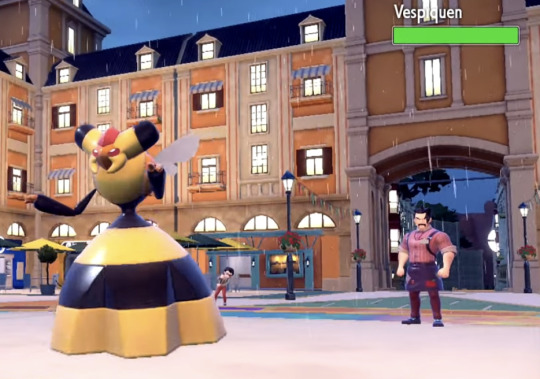
The saguaro needs other animals and bugs for pollination, such as the White-tailed Dove, Long-Nosed Bat, and the Honeybee. The Honeybee is the most influential pollinator for the saguaro. Isn’t it interesting that Saguaro has a Vespiquen in his team?
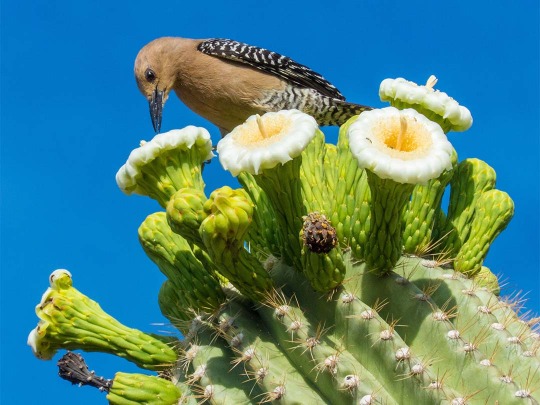
This point is a bit selfish lmaoo, but many birds rely on the saguaro for food or shelter, such as the Elf Owl, White-tailed Dove, Finches, Crested Caracara, Red Tailed Hawk, etc. There have even been a few cases of Bald Eagles nesting in the cactus! The Gila Woodpecker is one of these birds, because its beak is strong enough to peck through the cactus. The Gila Woodpecker and the saguaro have a mutually beneficial relationship because of the food and shelter provided to the woodpecker, and the pollination and ridding of harmful insects for the saguaro. Anyway PlainDoughnutShipping is real because Ecology said so 。゚(゚´ω`゚)゚。

This is a huge stretch, but recall how the saguaro is a Keystone Species. This name comes from the Keystone in an arch or vault. The keystone is the center stone placed last to secure the entire structure. Like the Keystone Species, if you get rid of the keystone brick, the entire arch will collapse. Arches are very popular in Spanish architecture. It’s been a staple since the Romanesque period, influencing Mudéjar, Gothic, and Renaissance architecture in Spain. The point is, arches are seen as very traditional, old fashioned, yet elegant. They are a symbol of stability and strength. I think it ties in with Saguaro’s gentlemanly behavior, but it probably isn’t this deep haha. I just can’t help myself ^_^; @shinyhappydigistar made this really interesting post on Saguaro’s old-fashioned speech mannerisms in both English and Japanese, so please read this for concrete evidence lol
I thought these little details were very charming! \(//∇//)\ I went overboard with some parts, but I think the designers put a lot of effort in their character designs. Mr Saguaro is cute and deserves to be analyzed!
#pokemon#pokemon saguaro#mr saguaro#instructor saguaro#pokemon sv#analysis#i am cringe but i am free#I’m coping so hard for this ship lmaoo#how did I go from cactus to Spain architecture?? XD#this is my analysis post and I can overthink as much as I want lol#long post#KallistoPost
31 notes
·
View notes
Text
Fantasy read-list: B - 2.5
And to conclude this season’s fantasy read-list section, I will list down there some additional works and references (taken from various articles of the same vein as those I previously quoted).
# When talking about the Pentamerone, one of the articles wrote about Rabelais’ work, and I have to introduce him here. Rabelais is one of the 16th century most famous French author, still famous to this day for his series of four books detailing the adventures of the giants Pantagruel and Gargantua. These books (Pantagruel, Gargantua, Tiers Livre, Le Quart Livre) are parodies of knighthood novels, medieval adventures and various fantastical stories, depicting the extravagant, convoluted and hilarious lives of two giants, Pantagruel and later his son Gargantua, in medieval (and early Renaissance) France. Parodying knight adventures and Arthurian fiction by having as a hero extravagant and goofy giants excessive in everything they do, these books are prone to all sorts of vulgar behaviors (sex, food, piss and poop are everywhere in these very organic books, where sometimes entire civilizations grow inside the giant’s body) and to all sorts of cartoonish shenanigans opposing the giants (and various trickster friends, such as Panurge) against caricatural, grotesque or dreadfully ineffective enemies. But these books also served as actual satire and scientifico-social criticism: Rabelais being a physician, a man of letters, an humanist and an anti-cleric, he used these books to expose the most ridiculous medicine theories, to denounce and caricature the various cultural institutions of his time, and bring forward all sorts of humanist ideals through allegories and metaphors, mixing high-minded preoccupations about civilizations, educations and humanity, among all sorts of medieval grotesque farces. Just as an example – the very fact of choosing giants allows for the farcical content (they stop wildfires by pissing on it, they gorge themselves on an impossible long list of foods and drinks in “gargantuan” meals, their mothers are described giving birth to entire zoos of animals and entire caravans alongside their baby…), but also reflects what the humanists wanted men to become, “giants” of culture and arts, who knew everything about all domains, be it politics, medicine, sports, war, literature, and were able to do anything and prepared for any situation, towering over things such as superstitions, ignorance and vices.
# When talking about Rabelais, another name must be brought up alongside him – another great parodist of knight-and-adventure novels, another great satirist author of the 16th century, but Spanish this time, not French: Cervantes, who by himself destroyed the whole knight-novel genre with his now classic El ingenioso hildago don Quixote de la Mancha, while also deconstructing and denouncing an obsessively strict and essentially absurd Spanish society.
# One article talking about the 1001 Nights evoked the great Hindu epic, the Mahabharata, and since I am not sure if I included it in previous lists, I will place it here.
# The same article detailed and highlighted the differences between the four great “historical” translations of The One Thousand and One Nights. The first translation, in French by Antoine-Galland, is noted to belong to the fashion of “fairy tales” of the time, a la Perrault and madame d’Aulnoy. As a result this translation focuses on the wonders, magics and supernatural forces of the tale, while removing all the more gruesome, shocking or vulgar elements to fit an upper-class, aristocratic, elegant audience. Then came the first English translation, by sir Richard Burton, which rather focused on the sexual elements of The One Thousand and One Nights, insisting on these oriental tales as erotic ones. This was a focus taken back by the second historical French translation of the text, by Joseph-Charles Mardrus, who him went even further and on top of putting back all the sex Galland had removed, also highlighted and insisted on homoerotic tonalities, especially on all the “saphic” elements. The last historical translation, presented as an in-between between the “marvel” and the “vulgar” traditions, is the French one of René R. Khawam, which forms a just balance between the “poetry of wonders” and the “bacchanals”.
# In an article about Perrault, two very important texts of French literature are mentioned. On one side, Les Fables de La Fontaine. La Fontaine was one of the great authors of the 17th century France, admired notably by Perrault himself, and today all French kids know him by his fables. If English-speakers know Aesop’s Fables, French-speakers know La Fontaine Fables – the latter often rewrites or remakes of the former, all depicting talking animals having short adventures with a moral at the end, but with the meaning of fables usually updated to a more modern context and the monarchic society of Renaissance France. They are still considered today one of the great classics of French literature. The other work, which was greatly renowned during the 17th century, but is quite forgotten today, is L’Enéide Burlesque, the Burlesque Aeneid, by “the brothers Perrault”. This is one of the many famous “burlesque” parodies of the time – another one, more remembered today, is “Le Virgile travesti”, “The transvestite Virgil” of Scarron, one of the great humorist writers of the 17th century. The whole idea of the “burlesque” humor was to take a work of a given genre, and write it in a language that didn’t fit this genre by the standards of the time. In the case of these parodies, they both took the Aeneid, a classical Roman epic, and retold it in the language most opposed to this noble and admired genre – they are basically vulgar retellings of the Aeneid filled with insults, colloquial terms, humoristic nicknames, and other “common” expressions and “lowly” terms usually found in the mouth of peasants and the like.
# Among the various stage works, music and movies adapted out of Perrault’s fairytales, I found explicit mentions of Rossini’s Cinderella opera, Prokofiev’s Cinderella, Tchaikovsky’s Sleeping Beauty, Maurice Ravel’s Ma Mère L’Oye, Disney’s Cinderella and Sleeping Beauty, Méliès’ Little Red Riding Hood and Bluebeard, Tex Avery’s parody of Little Red Riding Hood, and Jacques Demy’s Peau d’Âne (Donkey Skin). With a special mention for Tahar Ben Jelloun’s work, Mes contes de Perrault (My Perrault fairytales), where the Franco-Moroccan author rewrites the stories of the Perrault in the Arabian fashion of The One Hundred and One Nights (Riquet with the tuft becomes Hakim with the tuft, Little Red Riding Hood becomes Little Red Burqa, etc…).
# While I will probably talk more of nursery rhymes in the next section of this read-list, a brief mention should be made here of Mother Goose as a character, and her association with nursery rhymes – all things invented by the British! I talked about it previously, but the “Mother Goose” in the title of Charles Perrault’s fairy tales, Contes de ma Mère l’Oye, is not an actual character of literature or folklore. “Tales of Mother Goose” was just a common folk expression for fairy tales and folktales in France (similarly people talked of “old woman’s tales”, of “wolf’s tale”, of “sleeping-while-standing tales”, of “donkey-skin tales”…). But when these stories were translated into English, “Mother Goose” because a character in its own right, brought to life by some specific English editors for a series of books that on top of covering fairytales, also started collecting and spreading nursery rhymes. The oldest nursery rhyme book involving Mother Goose would be 1764’s Mother Goose’s Melody, or Sonnets for the Cradle, which was the work that would associate forever Mother Goose with nursery rhymes. Mother Goose’s popularity was also helped by several stage shows in the early 19th century that made the literature figure a famous pantomime character: one of these shows being the notable Harlequin and Mother Goose, or the Golden Egg.
# In an article covering women who wrote fairytales (such as those I detailed in my fairytale post previously), a particular insistence was made on one of the “first generation” female authors, alongside d’Aulnoy and such: Catherine Durand, who wrote several fairytales throughout her works. For the “second wave” generation, the 18th century authors, the focus was more on the Comtesse de Ségur, which I already mentioned as the author of in French “Nouveaux Conte de Fées”, (New Fairytales) ironically translated in English as “Old French Fairytales” – though the article notes that from this first generation that built and invented a true “faerie” (it notably invoked Durand’s story The Origin of Fairies, where she gives a mythological explanation to the existence of the fairies of fairytales, and her “Le Prodige de l’Amour” where she highlights the supreme magical power of love), the comtesse de Ségur denotes herself by depicting in her fairytales all sorts of gratuitous horrors and hopeless fights against a crushing world filled with hatred and treachery. In the article’s words, her fairytales are less about marvels than about “modern terrors”. Finally, to mention a more modern wave of fairytale authors, the article concludes with the 19th century’s Delphine de Girardin, who wrote “Fairytales of an old maid, written for her nephews” – noted to be very cynic and bitter fairytales, despite their apparently fantastic and childish titles (for example one is about a boy having his wish granted of owning a flying dog… only for said dog to ends up dissected by scientists trying to understand how it could fly at all). By comparing these three authors work, the article wanted to highlight a certain “evolution” of the female fairytale throughout the centuries.
#fantasy read-list#fantasy literature#fantasy fiction#fairy tales#fairytales#french literature#the one thousand and one nights#rabelais
11 notes
·
View notes
Text
hi, my name is Caroline! Message me for my personal social media accounts (if you’re not a bot)
basic facts: she/her, autistic, Taurus (May 17)
special interests: coquettecore, balletcore, pastels, ballet (especially Russian ballet!), languages, world history, art history, and Victorian/Regency era fashion.
Other interests (used to be into them years ago but can still talk about them a bit): K-pop, Hetalia, musicals, Fruits Basket, some bands
Favorite dancers: Natalia Osipova, Olga Smirnova, Polina Semionova, Diana Vishneva, Olesya Novikova, Viktoria Tereshkina, Svetlana Lunkina
Favorite painters/styles: Monet, Degas, rococo, anything Impressionist, anything Renaissance, anything orientalist.
Languages: English (native) Spanish (studied it for 13 years in school, can understand more than speak), Japanese (studied for 2 years in college), Russian (currently learning!)
5 notes
·
View notes
Note
Hi, Carrie and the vvitch for the ask thingie.
Hi!!!
the vvitch: what’s ur favorite historical time period? (without the old-timey bigotry)
Ooh, definitely the 70s!!! I also really like the Renaissance, particularly Italian and Spanish fashion
carrie: if u could have any superpower, what would u pick?
Click, just like Adam Sandler 🥺❤️
4 notes
·
View notes
Text
A fun fact about La Demonia Roja:

Demonia would be fucking weird in 1721 even if she was an ordinary ass Manila galleon.
The reason? Galleons (of her type) largely fell out of use since the Renaissance.
As the Age of Sail advanced since then, boats would specialized in a certain task like trade, battle, etc., as opposed to being jack-of-all-trades on water. As much as Demonia would have been modified to be a warship in her own right with guns of her own, she's still a treasure ship from the earlier days of the Spanish Empire. A relic by the 1700s within the main Devil's Eye timeline.
If it weren't for her red sails especially, which is a part of the legend of the Seven Deadly Sins of the Seven Seas, your Joe Schmoe pirate may try to take a stab at boarding her to take whatever treasure she might have with the mindset that if the boat is old-fashioned, then so is the crew. Nevermind she still needs about 200-ish men to man functionally, though then again, pirates are scary and most sailors aren't fighters.
I would imagine, when she docked for a time in Guangzhou for 8 years, her sails were temporarily replaced to allow the Seven to blend in more. But she would be a wonder and object of curiosity by the locals and other foreigners nonetheless.
3 notes
·
View notes
Note
Hello hi I found the post with the elven LI’s and I have taken your recommendation to ask about clothing references. I would very much like to see said folders. Also your art is very pretty :)
Hello! first of all, thanks so much <3 very appreciated!
Second, this is gonna be long, so let me add a read more
Alright I'm gonna try to keep this brief but I think I'll fail
Like with all of the other character art I did, I referenced a bunch of real world folk/traditional costumes and mixed them with fantasy stuff. City elves are a bit more mish-mash than, say, the dalish, especially considering that these three travel a lot and some of them don't feel very connected with their hometowns.
Zevran

He was probably the easiest to do, since I had already drawn him before
His clothes are inspired by castillan traditional clothes, which I sort of turned into an excuse to give him those torero pants with the highest high waist I ever saw.
The boots are supposed to be the antivan leather ones the Warden can gift him, and they're inspired by spanish half chaps (from the lower left picture, that's a costume from Granada)
The dalish gloves are also there, but they're a bit less detailed, I just added some little Mythal trees to make them dalish-y
He has little strings of pearls in his hair because it's another renaissance Spain/Italy thing i really like
My favourite thing i gave him is the hip chain with the little charms. I forget where I saw this headcanon but it basically talked about how Zevran holds small trinkets very dear and that he probably uses the metal you can gift him by melting it into keepsakes of his adventures. they're really tiny but you can see the Denerim shield, the Circle symbol, a hammer for Orzammar, the Redcliffe windmill, the Dalish mask and of course the Grey Warden griffin
Fenris
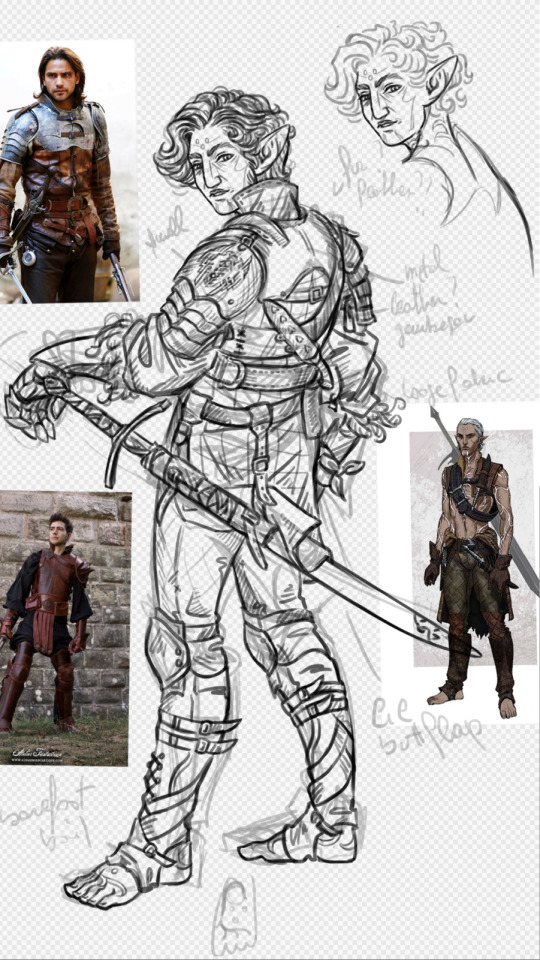
He's the least traditional one, I doubt he'd want to wear Tevinter clothes after years in Kirkwall.
I used more-or-less accurate references for the armor, mostly for the wide use of leather that seems to make up most of Fenris's canon outfit. Still gave him a gambeson because I'm not a savage.
Originally I wanted to dress him in looser clothes, considering his marks might hurt from all the friction on his skin, but It's very hard to give loose fitting clothes to someone wearing so many straps, so I stayed sort of middle ground
I still kept some of his original design details, like the clawed gauntlets, the feathers in the braces and the bare feet, plus! Hawke's red favor and the Amell crest (it's on his shoulder now, where crests usually are)
Also he has a regular big sword instead of a fuckoff big sword because uh I'm a stickler for rules
The tip of the scabbard has a little metal hawk decoration :)
Sera

She doesn't like speaking of Denerim, but at the same time I feel like she would sill hold on to some of the little fashion quirks from there (which I also made up by making my Tabris wear Kurdish-inspired clothes and spreading it to the whole alienage)
So yes, the vest and some of the jewellery are inspired by Kurdish costume, while the rest comes mostly from her concept art
There is a Lot of Sera concept art, and I get it! cause it's very hard to keep to one singular idea while designing her. I brought back some of the combat archery armor that she had at some point in her development, plus the makeup stripe over her eyes (which I added at the very end and forgot to save the picture i took it from)
The asymmetrical gloves are sort of what an archer would wear, with the arm that holds the bow being more covered to avoid injuries from the bowstring and the drawing hand only covered around the fingers.
The pants are inspired by the medieval multicolored hose because listen, she's a little jester at heart and she would totally wear those
The HAIR was hard to decide, because the bowl cut is nice, but the side-shave is also very badass. the mullet/ponytail one was very close to being the final choice though.
#hoo boy thanks for letting me talk about all this!!#hopefully it was interesting!#I really really get lost in details#this was from a while ago so I had to look up some stuff that I forgot in the meanwhile#ask#tallfroggie20#cate draws elves
12 notes
·
View notes